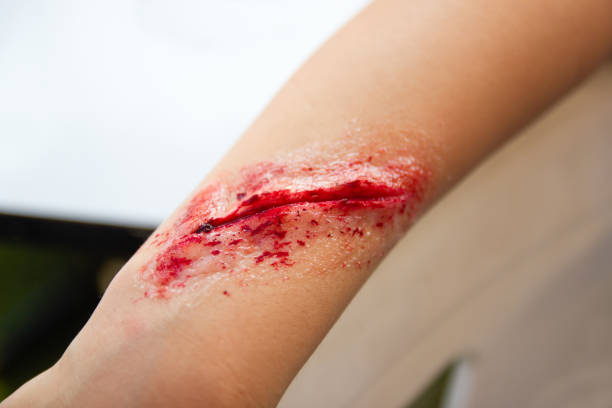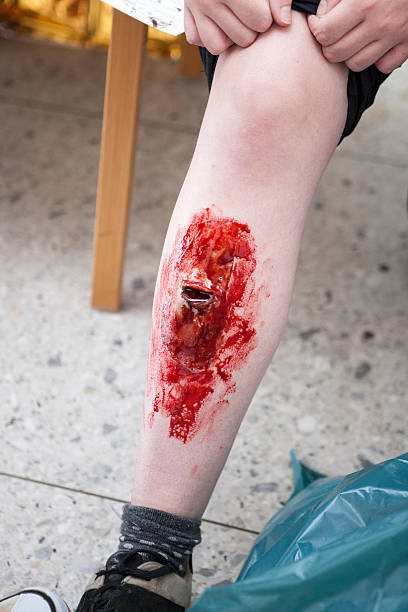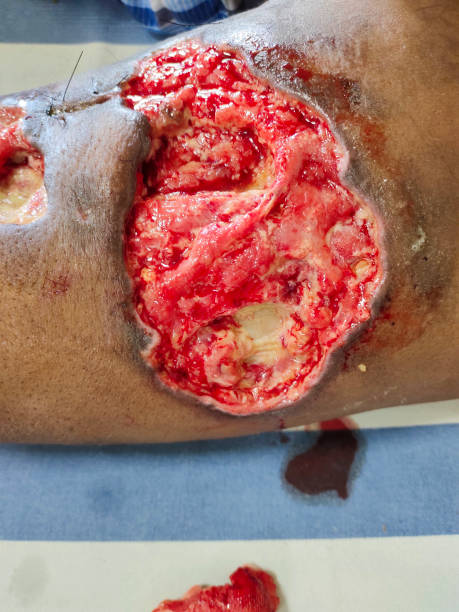
A friend asked me to shed some light on how to treat open wounds. His question was if all those things we see in movies are what should be done, like pouring alcohol or burning the open flesh?
This is an interesting question deserving of an explanation. As he became suspicious of those techniques, I am sure that now, as you think about it, you yourselves are starting to question the same thing, and rightfully so, since everything so far was a lie.
Not to disappoint you, your suspicion is partially correct. Partially, because some things we do are beneficial and some are not. Overall, many things we do are unnecessary.
There are basically two types of open wounds: cuts and puncture wounds. They will be treated differently. For example, we can rinse a cut, but we cannot and should not flush a puncture hole.

No matter how deep the cut, we can flush it with clean water because the water will run off. The question is, is this necessary, and the answer is no. Unless there is dirt in the wound, it is best not to touch it. We are educated/indoctrinated to rinse the wound to clean it of not just the dirt but the bacteria, which is nonsense since the water may bring more bacteria into the wound.
Is this is why we should use alcohol? NO, alcohol does not kill the bacteria and it does not sterilize the wound, it will be absorbed and poison the blood, and this is why it becomes beneficial.
This sounds strange, but as I have mentioned many times before, by poisoning the body, we force cellular closure, and this becomes a preventative measure protecting us from absorbed toxic debris, if there were one. It is enough to put a couple of drops of alcohol to force the cellular closure, but I am against it. The wound itself is in a state of defense as inflammation sets in, and further poisoning is unnecessary. Since alcohol does not kill bacteria or fungus, why bother?

We have to understand that most open wounds are clean. Blood vessels have been cut, which creates bleeding. The blood is cleaning the wound, so we have to allow some blood to go out and instead of making the wound toxic, all we have to do is to wipe off some of the blood and press the skin together, use some cloth to tie it up, and this is it. If we have a masking tape or any kind of adhesive tape, we can use it to secure the skin connection, and it works as good as stitches.
Puncture wounds we treat the same. Let it bleed a bit and do not close the wound. Allow it to drain. If it continues to bleed because a bigger blood vessel was cut, make a compression to prevent the bleeding.
Macerated wounds and wounds created by tearing the flesh apart are more problematic. A lot of tissue will lose circulation and will die. This is where problems occur. The danger is not pathogens from the outside as is the decaying/rotting flesh. If we are talking about temporary wound management, treat those wounds the same as previously described, but if there will be no other help provided in reasonably short time, the wound has to be cleared of the dead flesh or sepsis will occur as the enzymes of decaying tissue start to poison the rest of the body. We call this necrosis. How dangerous is the necrotic tissue in the body is shown by examples of so-called flesh-eating bacteria we find in hospitals around the world.

When the peripheral circulation is bad and tissue starts to die as a result of it, this tissue becomes necrotic, and since our bodies no longer produce GcMAF to label such tissue a garbage, the white blood cells do not remove it, and bacteria are formed to deal with this issue. Of course, miseducated doctors try to poison the bacteria with antibiotics, but the necrosis continues to spread, so doctors proclaim that those bacteria are not responding to the antibiotics. A new brand of bacteria, they say, is antibiotic-resistant. Nonsense, as you can see. The problem was never the bacteria but the toxic tissue. By placing nanoparticle colloidal silver over the affected area, the electroconductivity of the tissues improves, and the spreading of necrosis stops. Oxygenating also helps stop necrosis as cells receive the missing oxygen, which will stop the necrosis of the tissue.
Lacerated wounds have dead tissue, which starts to have a bad odor. Flies are attracted and lay eggs on such a wound. Worms are created and eat this necrotic tissue. When the necrotic tissue is gone, the smell is no more, and flies no longer lay eggs. Now the wound is clean and starts to heal.
If you are far from help and your wound smells, do not cover it. Allow flies to do their job. They will save your life.
If we stitch the wound without cleaning it, the necrosis continues and creates a problem. This is why a surgeon cleans the wound of the fragments of dead tissue before stitching it and pours an antibiotic to prevent cells from absorbing toxic material and leaves a drain so that whatever decay may still occur can be drained out and does not affect the healthy tissue.
It is better to use nanoparticle colloidal silver than the antibiotic since it will destroy every bacteria and fungus and improve the electroconductivity of the tissue, enabling faster healing.
Gun-inflicted wounds should not be cleansed because they are sterile. The bullet is hot and sterile because of the heat, so just focus on stopping the bleeding.
Sticking hot metal or pouring gun powder into the wound and lighting it up only destroys the tissue more, which will create necrosis and more problems in the future.
Animals in nature do not treat their wounds, and they do not suffer from necrosis or show infections. The reason is, they produce GcMAF, which alerts the white blood cells to dead tissue, and they clean it up.

When we do not eat starches, we also produce GcMAF, this is why we do not have to worry; our wounds will heal easily with no infection occurring. As long as we are in ketosis, we do not have to worry about wounds and healing will be fast.
A friend of mine was cleaning the hull of his sailboat in a closed bay in St. Martin, where the water is dirty, and accidentally cut his leg. The cut was deep and bleeding profusely. He was following SHP, so when he asked me what to do, I told him to compress the wound and when the bleeding stopped, to tape it with masking tape. He did this and could not believe how fast the wound was healing with no infection or discoloration.
We have to stop mimicking what we learn from movies and professors. They are only spreading misinformation. Do not take a tetanus shot because it is designed to sterilize you.
Fortunately, the time of exposure is here, which means that a new world, free of lies, is about to be unveiled.
Love and light to us all
